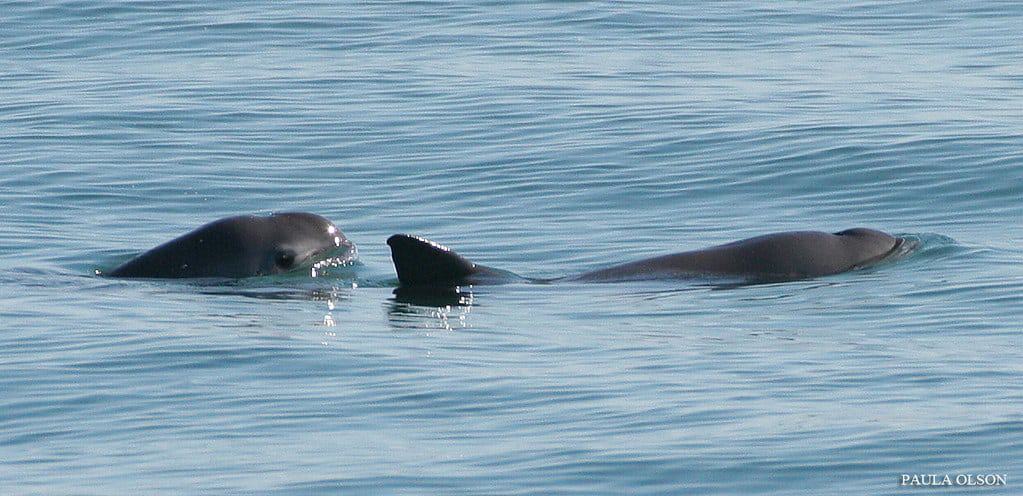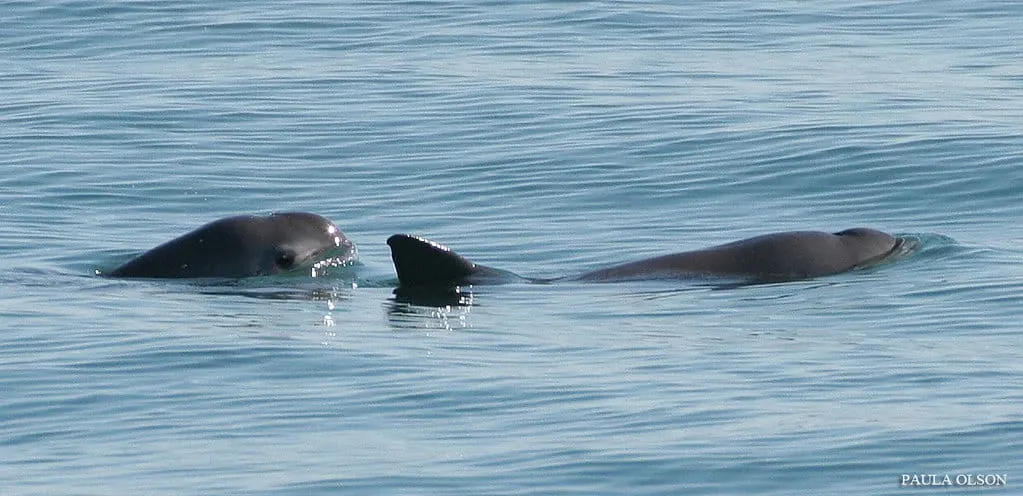The vaquita, a small porpoise species, is on the brink of extinction. This marine mammal is the smallest of all living cetaceans, found exclusively in the northern end of the Gulf of California in Baja, California, Mexico. With a maximum body length of 150 cm for females and 140 cm for males, its size is not the only thing that sets it apart. The vaquita’s unique appearance, characterized by dark eye rings and a rounded head, makes it easily distinguishable from other species. However, its numbers have dwindled alarmingly due to human activities, primarily illegal fishing.

A Brief Overview
The vaquita, which translates to “little cow” in Spanish, was first defined as a species in 1958. It wasn’t until 1985 that scientists could fully describe its external appearance. The vaquita’s habitat is restricted to a small portion of the Gulf of California, where it thrives in shallow, murky waters less than 150 meters deep. This limited range makes it the marine mammal with the smallest habitat.
The Threats They Face
The primary threat to the vaquita’s survival is bycatch in gillnets from illegal totoaba fishery. The totoaba, another endangered species, is hunted for its swim bladder, which fetches high prices on the black market, especially in China. Despite efforts by the Mexican government to ban gillnets and establish protected zones, illegal fishing remains rampant, leading to a significant decline in the vaquita population. In 2018, fewer than 19 vaquitas were estimated to be alive; by 2022, this number was believed to be less than 10.
Conservation Efforts
Efforts to save the vaquita have been extensive but challenging. The Mexican government has implemented measures such as making it a felony to remove endangered species and prohibiting gillnet use. Programs like PACE-VAQUITA were launched to enforce gillnet bans and provide economic support to fishermen. However, the lure of high profits from illegal totoaba fishing has made it difficult to curb poaching. In 2023, it was found that the vaquita population had stabilized since its last recording in 2021, offering a glimmer of hope.
The Role of Consumers
A significant portion of shrimp caught in the vaquita’s habitat, which has a high bycatch rate, is consumed in the United States. As a result, US consumers indirectly contribute to the vaquita’s decline. Awareness and responsible consumption can be crucial in conserving this endangered species.
Conclusion
The vaquita’s story is a stark reminder of the delicate balance of our ecosystem and the devastating impact of human activities. As the world’s most endangered marine mammal, the vaquita stands as a symbol of the urgent need for conservation efforts and responsible fishing practices.
You might also enjoy:
The Dolphin Is The Most Social Marine Mammal
The Marine Apocalypse on California’s Coast
The 13 Most Endangered Mammals On Earth
Join our Forum for free today!

- The Bond Between a Wild Baby Bison and Her Rescuer - July 20, 2024
- An Excited Husky’s First Ever Time in Snow - July 20, 2024
- Top 20 Colorful Species To Brighten Your Day - July 14, 2024


